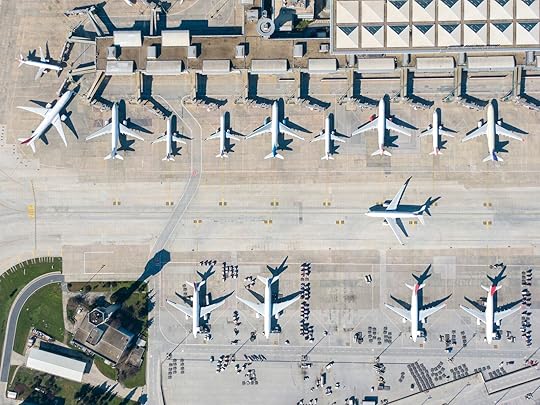US Flights Are Cheaper Now Than 10 Years Ago, But There’s a Catch

In recent months, it’s been hard to avoid headlines about the rising cost of just about everything. Inflation has been stubborn, tariffs and tariff threats hang over businesses, and everyday expenses feel higher than ever. Yet as costs go up or stay at elevated levels in many areas of life, the cost of certain parts of travel is actually decreasing — even during the summer months when travel costs typically soar.
Much of this is driven by cheap flights and hotel room discounts. According to the U.S. Travel Association (USTA), airline fares in June 2025 were 3.5 percent lower than June 2024. Scott Keyes, of Scott’s Cheap Flights, noted in a story in TIME that when adjusted for inflation, airfares are 41 percent cheaper than 10 years ago, and June 2025 was the “second-cheapest month ever for inflation-adjusted airfares.” For accommodations, the USTA found that lodging prices in the United States are down 3.6 percent compared to last year.
Judging by an average makes these declines appear universal, but deals may be highly route- or market-specific. Nevertheless, the average is pointing in a clear direction.
There are a few reasons why travel costs in the US are doing the opposite of the cost of just about everything else. One of the biggest reasons is demand.
The US is the only country forecast to see a decline in international visitor spending in 2025 among the 184 countries analyzed by the World Travel & Tourism Council (WTTC). The WTTC forecasts travel and tourism to contribute an all-time high $11.7 trillion to the global economy in 2025, while tourism to large markets like the US, China, and Germany slows. The US, notably, has the largest travel and tourism sector globally.
(The reverse can be seen for travelers in Southeast Asia, a WTTC spokesperson noted in an email, where Indonesia and the Philippines have high traveler demand and low relative costs.)

Screenshot: International Trade Administration
Far fewer international travelers are visiting the US this year following Trump administration statements and policies that detained scientists, leisure travelers, and others who would not otherwise need to spend days in detention for normal travel. The number of international travelers coming to the US is expected to be between 5.1 and 8.7 percent lower in 2025 than 2024. In certain parts of the country, lower hotel prices are tied to significantly fewer Canadian visitors following the administration’s “51st state” comments and threatened tariffs. The lower demand from international travelers is a significant factor. Airlines have volatile dynamic pricing, with quick decreases when there’s less demand. Hotels have higher fixed operating costs, but often reduce prices to maintain occupancy during periods of less demand.
Then there’s the lower price of jet fuel, a major expense for airlines. Fuel costs from January through May 2025 were 14.4 percent lower compared to the same period in 2024.
Outside of air travel and accommodations, however, travel costs seem to be continuing to rise.
The caveats to lower flight and hotel pricesHow to get there and where to stay is only part of the costs of travel, of course. Travelers aren’t immune to the higher prices for goods and experiences that have followed inflation trends. The average cost of a full-service meal at a restaurant in the US went up 4 percent from June 2024 to June 2025. And while fuel costs are down, that’s not reflected in all ground transportation costs: Rideshare costs are up, as are car rentals.
In a sense, the lower prices for airfare and accommodations are mitigated by the rising cost of actually being somewhere.
It’s unclear whether this drop in costs is temporary or indicates a lasting trend. Demand could increase with major events held in the US in the coming years like the World Cup in 2026 and Olympics in 2028. Political tensions could ease and more visitors could come in the second half of the year, pushing demand and costs up.
Or costs could drop even further. Tourism taxes like entry fees and added taxes on hotel nights and cruise entry fees have taken off in places experiencing overtourism like Italy, Spain, Japan, Thailand, and more. The US recently approved a $250 per person “Visa Integrity Fee” for anyone who wants to enter the country for tourism. For a family of four from another country, that means $1,000 just to get in the US to see the Grand Canyon, Statue of Liberty, or any of the many draws for people around the world. It’s hard to imagine that won’t put a further damper on demand.
There’s no silver bullet answer if now is the time to book travel in the US for the cheapest prices. Either now or later in the year, however, you’re likely to pay less for flights and a room than you did last year. 
Matador Network's Blog
- Matador Network's profile
- 6 followers



